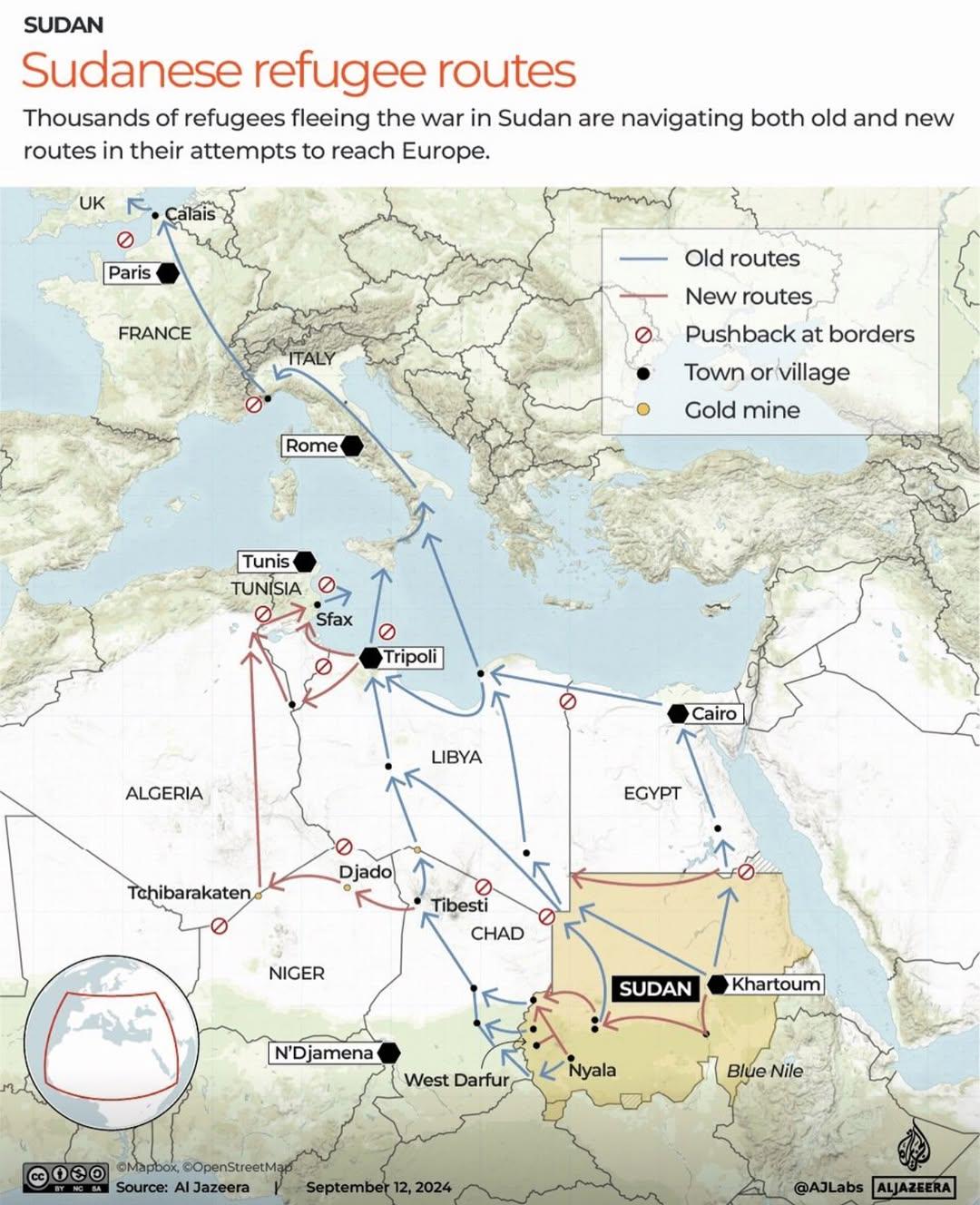Sudanese Refugee Routes Map


Marcus Rodriguez
Historical Geography Expert
Marcus Rodriguez specializes in historical cartography and geographic data analysis. With a background in both history and geography, he brings unique...
Geographic Analysis
What This Map Shows
The "Sudanese Refugee Routes Map" presents a visual representation of the various pathways that refugees from Sudan take as they flee their home country in search of safety and stability. This map not only highlights the geographical routes taken but also illustrates the broader context of displacement within and beyond Sudan’s borders. The visualization showcases the key countries that serve as destinations or transit points, providing insight into the complexities of migration patterns from one of Africa’s most troubled regions.
Deep Dive into Sudanese Refugee Movement
Sudan has experienced a long history of conflict, political instability, and humanitarian crises, leading to one of the highest numbers of refugees in Africa. According to the UNHCR, as of mid-2023, there are over 3 million Sudanese who have been forcibly displaced, with many seeking refuge in neighboring countries such as South Sudan, Chad, Egypt, and Ethiopia.
The refugee routes depicted in the map reflect not only the geographical realities but also the socio-political dynamics at play. For instance, the route to South Sudan is often taken by those fleeing from the Darfur region, where ongoing violence has forced many to leave their homes. Interestingly, this route is fraught with its own dangers, including clashes between armed groups and the challenges of crossing the Nile River, which can become treacherous during the rainy season.
Chad has become another significant refuge for Sudanese people, particularly for those escaping the conflicts in the western part of the country. The map indicates that several camps have been established along the border, which serve as temporary havens for families who have endured harrowing journeys. The conditions in these camps vary significantly; while some are supported by international organizations, others lack basic necessities, highlighting the importance of humanitarian aid.
What’s fascinating is that the routes taken by Sudanese refugees often change due to shifting political landscapes and security issues. For example, increased tensions in Ethiopia have led to a decrease in the number of refugees using that route recently, as people seek safer pathways. Overall, the dynamics of these movements are influenced by a complex interplay of factors, including ethnic conflicts, economic hardships, and climate change, which has exacerbated resource scarcity in many regions of Sudan.
Regional Analysis
Examining the map, we can identify distinct regions that play crucial roles in the refugee crisis. For instance, the journey from Sudan to South Sudan is characterized by a mix of urban and rural landscapes, where refugees frequently stop at urban centers like Juba. This is in stark contrast to the routes leading to Chad, which often traverse vast desert areas, making the journey particularly perilous.
Additionally, the refugee experience can vary greatly depending on the destination. In Egypt, for example, Sudanese refugees often face integration challenges due to legal restrictions and economic barriers. Conversely, in countries like South Sudan and Chad, while there may be more immediate safety, the refugees often find themselves in overcrowded camps with limited access to healthcare and education. These regional differences are critical to understanding the broader implications of the refugee crisis.
Significance and Impact
The topic of Sudanese refugee routes is more than just a geographical concern; it embodies the human struggle for safety, dignity, and a better future. Understanding these routes helps to shed light on the experiences of millions who are forced to leave everything behind. Moreover, the implications of this displacement extend beyond the borders of Sudan, impacting regional stability and international relations. Countries that host large refugee populations often face significant economic pressures, which can lead to tensions with local communities.
Current trends indicate that the refugee crisis is evolving, as new conflicts arise and environmental factors like drought intensify. This may lead to increased displacement in the coming years, underscoring the need for comprehensive policies that address both the immediate needs of refugees and the root causes of their migration. As the global community continues to grapple with the complexities of forced migration, the Sudanese refugee routes map serves as a crucial tool for understanding and addressing these pressing humanitarian issues.
By appreciating the geographical narrative behind these movements, we can foster a deeper empathy for those on the move and advocate for more effective solutions to support displaced populations around the world.
Visualization Details
- Published
- September 28, 2025
- Views
- 72
Comments
Loading comments...